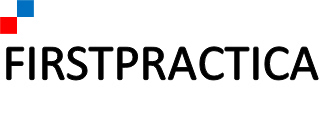If you run an ad-funded site here are the 2017 ad industry trends you need to know. Optimize your website for higher paying ads and up to date SEO.
Mobile-first SEO
Search engines like Google are implementing a change in their ranking algorithms to make the mobile version the primary version of a site. Metrics like metadata, user interface, site performance and user engagement will influence your search ranking and therefore your page views from Organic Search based on Mobile. Desktop will continue to count, but as a secondary set of metrics.
Language and tech shifts
We cover AMP HTML extensively on this site because it’s changing the web. AMP pages load faster, using a different language from standard HTML. Likewise, you need AMP ad codes to run ads on these pages. Today the ad ecosystem is building AMP technology, adding header bidding and richer ways to display ads. The same goes for Facebook Instant Articles, running Facebook HTML, as well as the end of the road for the Flash plugin to the benefit of HTML5.
Video, video, video, (audio)
Content is shifting. We’ve had text, we’ve had images, now the video content creation is in full force. Ad budgets are shifting to a higher mix of video as well as audio ads. You’ll want your site visitors to want to see and listen to the content, and it’s very likely that ad units will have the appropriate trackers in place to detect if a computer is muted or if audio is on with sufficient volume to be heard. Video and audio ads that users want to see and hear will pay more. This shift in ads means that if you operate a content website you need to start producing engaging video content to match these when they become available.
SSL becomes the norm
It’s been a long time coming. Browsers will start displaying warnings when accessing sites without https enabled, in a move to drive users towards secure sites. This hints at not necessarily positive search ranking signal for using SSL, but penalty for not using it. If you look at the top 100 websites worldwide in 2016 like CNN or BBC.com, many if not most of them do not use SSL for their content sites. The reason for that is that these sites make money from ads, and ad providers have not transitioned to SSL yet. No one wants to lose revenue. But this will change next year as ad providers also finally get ready with SSL ads that monetize equally.
Social Media continues to expand ad push
Social Media drives for many sites anywhere from a small percentage to the majority of traffic. If you have an ad-funded site, Facebook, Instagram, Twitter, Pinterest and others might drive as much as organic search. It’s critical to keep these sources growing. One of the nice things that occurred in 2016 is the advent of ad opportunities directly on those social sites, like Facebook Instant Articles.
Progressive Web Apps are coming
Progressive Web Apps, PWA’s, are a technology to enable an app experience within a mobile device browser. One of the design goals of PWA’s is the ability to store and deliver content offline. As offline browsing becomes mainstream how will ad tech adapt to this? To date ads require server connection and display dynamically. Content producers, publishers and the ad ecosystem need to start thinking how to adapt to this shift, likely for 2018 or later.
You can already see many of the 2017 ad industry trends on today’s websites.

Leave a Reply